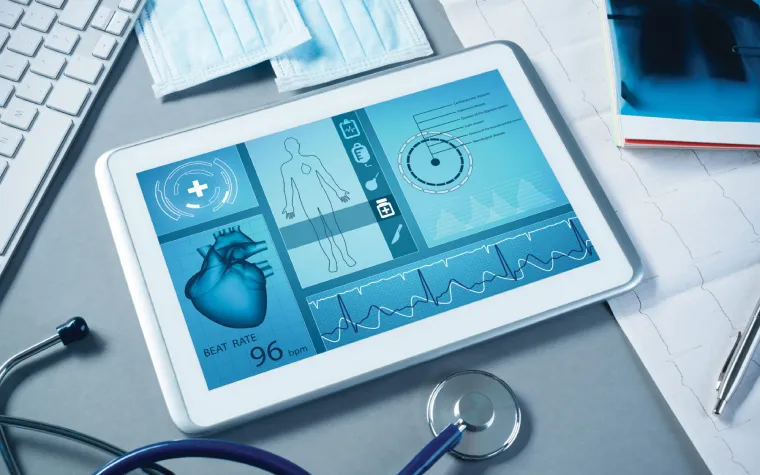
Digital Transformation in Healthcare: How Technology Can Improve Patient Outcomes
Technology has revolutionized all components of life, including inclusive of healthcare. The pace of digital transformation in healthcare is accelerating, with improvements in patient outcomes seen as a result. In this blog, we will explore different ways technology has been used to benefit patients, giving providers access to vital data they need and offering new ways to diagnose and treat diseases. Read on to find out how digital transformation is taking healthcare by storm!
Introduction to Healthcare Digital Transformation
The integration of digital technology into all areas of business results in fundamental changes to how businesses operate and deliver value to customers.
In healthcare, digital transformation can have a profound impact on patient care, driving better outcomes at lower costs. By automating manual processes, integrating disparate data sources, and using predictive analytics and other advanced technologies, healthcare organizations can improve patient care quality and safety while reducing costs.
Digital transformation can help healthcare organizations achieve their triple aim of enhancing populace health, improving the affected person’s experience, and decreasing the value of care. When done right, digital transformation can be a key driver of improved patient outcomes.
Challenges Faced by Healthcare Providers During Digital Transformation
One of the challenges faced by healthcare providers during digital transformation is the need to ensure data security and privacy. With more patient data being stored electronically, there is an increased risk of unauthorized access and disclosure. Healthcare providers must implement security measures to protect patient data, such as encryption and user authentication.
Another challenge is the need to manage increasing amounts of data. As healthcare providers generate more electronic health records, they need to develop systems to store, organize, and analyze this data. This may be a frightening task, mainly for smaller groups with restricted resources.
Lastly, healthcare providers must consider how best to use technology to improve patient care. While there are many potential applications of digital health technologies, not all of them will be applicable or beneficial for every organization. Healthcare providers must thoughtfully select and implement technology solutions that will help them achieve their specific goals for improving patient outcomes.
Benefits of Digital Transformation for Healthcare Providers
Digital transformation can help healthcare providers in several ways. It can improve patient outcomes by providing access to better care, improving communication between providers and patients, and reducing errors. Additionally, it can help provider organizations keep up with the ever-changing landscape of healthcare, reduce costs associated with paper records, and increase efficiency.
Digital transformation can provide healthcare providers with increased efficiencies and effectiveness in care delivery, leading to improved patient outcomes. By automating workflows and processes, transcription and data entry tasks can be streamlined or eliminated. This means that nurses and doctors can spend more time on direct patient care, while still having access to accurate and up-to-date patient records.

In addition, digital transformation can help to improve communication between healthcare providers and patients. For example, online appointment scheduling and video visits can make it easier for patients to connect with their doctors. Online portals can also give patients 24/7 access to their medical records, so they can track their progress and manage their health more effectively.
Overall, digital transformation has the potential to vastly improve the quality of healthcare for both providers and patients alike. By making care more efficient and effective, digital tools have the power to improve patient outcomes across the board.
How Technology Can Help Improve Patient Outcomes
In recent years, healthcare organizations have been embracing digital transformation to improve patient outcomes. By leveraging technology, healthcare organizations can achieve several objectives that lead to improved patient outcomes, including:
- Efficient and effective communication between care team members: Technology can help care team members communicate more effectively with each other, which can lead to better coordination of care and improved patient outcomes.
- Improved access to information: Technology can help make medical information more accessible to patients and caregivers, which can lead to better decision-making and improved patient outcomes.
- Enhanced patient engagement: Technology can help patients become more engaged in their care, which can lead to improved compliance with treatment plans and ultimately better health outcomes.
- Reduced errors and improved safety: By leveraging technology, healthcare organizations can reduce errors and improve safety for both patients and staff. This can lead to fewer complications and better overall patient outcomes.
Conclusion
In summary, digital transformation in healthcare is an essential process for improving patient outcomes. It has enabled us to view patient data more quickly and efficiently, use telemedicine technology to help those who cannot access healthcare easily, and facilitate more effective communication between patients and their physicians. While some challenges remain with implementing new technologies into the healthcare system, such as costs of implementation or privacy concerns, these can be addressed by utilizing proven strategies that have developed over time. Healthcare professionals should continue to invest in digital transformation initiatives so they can ensure meaningful improvement in patient care and better manage their practices in the long run.



